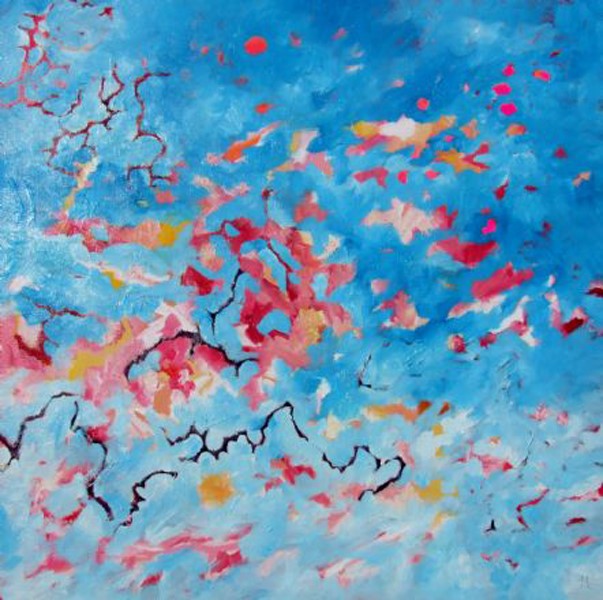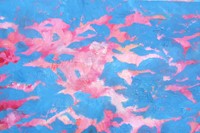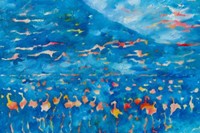There is a curiously explosive beauty about the paintings acclaimed British artist Jeremy Houghton has included in an upcoming group show at The Saatchi Gallery.
There is a curiously explosive beauty about the paintings acclaimed British artist Jeremy Houghton has included in an upcoming group show at The Saatchi Gallery. Rendered in oils his beguiling abstractions contain so much flux and fluidity that they almost dance in front of your eyes, and as such they form a key element of the Fundraising For Flamingoes show, designed to highlight the fast-encroaching extinction of the most shocking pink creature on the planet. Here, the official artist of London Fashion Week discusses the metaphor and meaning to be found in his wild aesthetic.
“I have always grown up around paintings. In fact, one of my earliest memories is being made to sit for a portrait when I was four years old. I remember hating it but I suppose it goes to show that art has always been a part of my life. I don't have many influences, though. My art is pretty wild and instinctive, so I admire and appreciate the work done by the fauvists and expressionists. I also admire the likes of Picasso and Matisse because they created their own footprints rather than followed other people’s. These paintings of flamingoes are all about energy: a mass of movement… shapes, lines, colours and reflections all pulsating as one. Thousands of these birds flocking together provide an invitation to explore millions of abstract possibilities, and I am interested in composing pictures that continue far beyond the edge of the canvas. I lived in Africa for five years – I was head of art at the international school of Cape Town – and obviously, there are unlimited options for painters on the African subcontinent but it was the flamingos that really caught my eye: I wanted something that would allow me to experiment with freedom, diversity and lucidity, but that would also provide a consistency throughout the work. These huge flying and floating shapes of living colour gave me that. In the work, I use the birds as metaphors and anagrams for a variety of themes, but the hidden backbone is actually a study of femininity, and each painting has personal stories and analogies referring to this. The conservation issues that my work has unwittingly publicised has added a whole new dimension: contemporary art is continually searching for the 'new', and that can stifle creativity and make it more and more abstract to the masses. I think more contemporary projects that tackle current issues, such as extinction, would be excellent, as it would open the door wider, and would help highlight all sorts of important issues. Essentially, I want my work to take people to a new headspace: a better one… a different one. I want to provide a breath of fresh air. The concept of beauty is important to me. I am fascinated by the study of aesthetics: what works; what doesn't. When I am painting I am looking for a balanced structure: a harmony, between the space, shapes, lines and colours. To me a truthful beauty on earth speaks of nature’s beauty – how it is balanced and harmonious, how colour speaks and everything has a cycle. If one ignores this delicate balance and breaks the equilibrium, then beauty can be lost.”
Think Pink: The Art of Conservation opens at the Saatchi Gallery on 23 March 2011.



